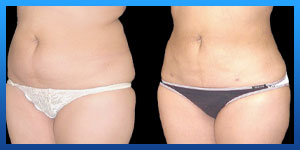Liposuction Scars Treatment
How to Treat Liposuction Scars?
Liposuction is a popular surgical procedure that removes fat deposits from your body. There are different types of liposuction, but every type involves making small incisions in your body to disrupt fat cells and using a suction-enabled device called a cannula to remove the fat.
Anything that cuts through all the layers of your skin is likely to result in a wound that will be visible for some time. Liposuction incisions are no exception.
Read more about : Will tummy tuck scars go away?
While usually less than an inch long, these incisions transition to a scab, which can then leave a visible scar. This article will explain:
. Why this scarring happens
. Ways to treat these types of scar
. Alternatives to liposuction that don’t require an incision
Can liposuction cause scars?
Significant scarring after liposuction is uncommon. An experienced plastic surgeon knows what to do and what to avoid during liposuction to minimize scarring afterward.

Ideally, your surgeon will make your incisions as small as possible and place them where they are least noticeable. When scarring does occur, it can be the result of poor incision placement during the liposuction procedure.
Hyperpigmentation, another side effect of liposuction, can also cause the incision to look more prominent on your skin after it heals.
In one study involving 600 people who had liposuction, 1.3 percent developed keloid scars at the site of their incisions. Some people have a genetic predisposition to developing keloid scars on their body. If you have a history of keloid scars, you may wish to keep this in mind if you’re considering liposuction.
After liposuction, the surgeon may instruct you to wear compression garments over the area where they removed the fat deposits. Wearing these garments correctly and according to your provider’s instructions can decrease your risk of having scars from the procedure.
Read more about : How to hide blepharoplasty scars?
Scar removal treatments
None of these methods can remove a scar completely, but they can reduce the appearance of scarring and improve other outcomes, like your skin’s range of motion in the area where the scar formed.
Silicone gel sheets and silicone gel
Silicone gel and gel sheets have become a popular at-home treatment to try to minimize the appearance of scars. Medical literature confirms that these methods can reduce the appearance of scarring when you apply them according to the instructions and use them regularly.
Researchers theorize that silicone gel hydrates your skin and prevents your body from overcompensating with extra collagen cells during the healing process, which is what creates raised and visible scars.
Experts recommend this type of scar revision as a first-line treatment before moving on to other methods.
Chemical peels and microdermabrasion
A dermatologist can use a chemical peel or microdermabrasion methods to remove layers of scar tissue from your skin. You can receive these treatments in your dermatologist’s office, and they don’t require additional recovery time.
The most common side effect is redness. Everyone’s skin will respond differently to this type of treatment, and you may need repeat treatments to see the scarring start to fade.
Cryotherapy
Doctors can treat hypertrophic and keloid scars with cryotherapy. This procedure pierces the scar tissue and freezes it with nitrogen gas from the inside out. The scar then “releases” from the healthy skin tissue surrounding it. Cryotherapy is relatively simple, quick for doctors to perform in an outpatient setting, and doesn’t cause a lot of pain or discomfort.
With cryotherapy, scars will swell, release discharge, and then fade. The medical literature is missing credible studies comparing this type of scar treatment with other kinds, but this method can be very effective in reducing the appearance of scars.
Laser therapy
Laser therapy is another outpatient procedure that can break apart keloid and hypertrophic scars resulting from liposuction. In this procedure, a laser heats the scar tissue while stimulating healthy cell growth around the area.
Laser therapy is a simple procedure, and recovery doesn’t take long. But repeated treatments are often necessary, and it can take months to notice the results.
Scar removal surgery
Scar removal surgery is an option for severe, highly visible scarring that makes you feel self-conscious. This treatment is the most invasive type of scar removal and carries the risk of creating more scars.
Scars that form during the healing process after typical liposuction are unlikely to require a surgical procedure to correct them.
Alternatives to liposuction
There are some less invasive alternatives to liposuction that promise similar results with a lower risk of scarring. People usually refer to these procedures as “noninvasive body contouring.”
Keep in mind that while these procedures may be effective, they don’t typically have the same dramatic outcomes as liposuction.
Alternatives to liposuction include:
. Cryolipolysis (CoolSculpting)
. Light wave therapy (laser liposuction)
. Ultrasound therapy (ultrasonic liposuction)
Source:
. https://www.healthline.com/health/cosmetic-surgery/liposuction-scars


